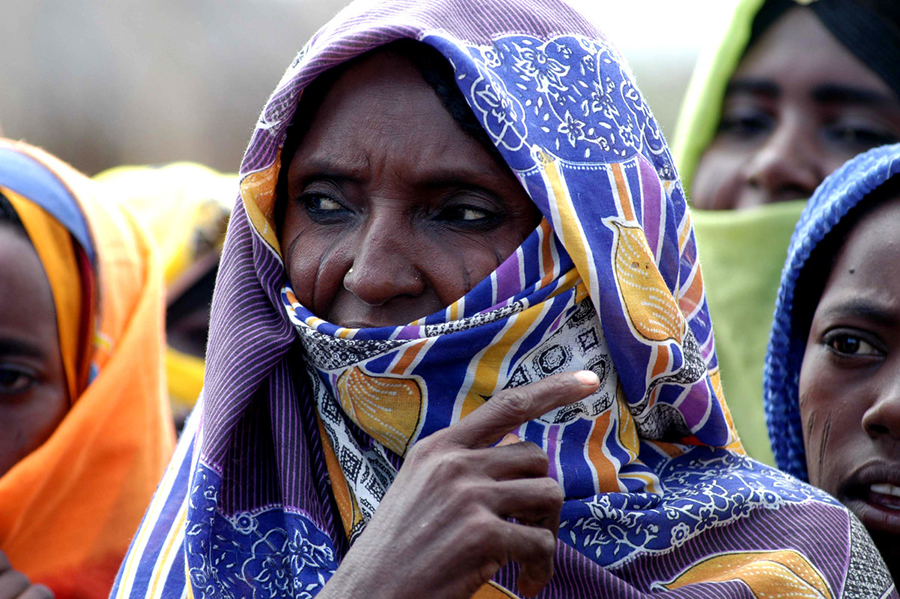
Photo Credit: S.J. Staniski/FHI 360
The 16 Days of Activism against Gender-Based Violence, which happen each year from Nov. 25 to Dec. 10, offer an important opportunity to step back and consider what we can do all year long to put an end to gender-based violence.
Globally, one in three women have experienced physical or sexual violence at the hands of an intimate partner. Roughly 20 percent of women have experienced sexual abuse before the age of 18, while just over 7 percent of women and girls older than 15 have experienced nonpartner sexual violence. This violence has immediate and long-lasting impacts on the health and welfare of women and children, with ripple effects in the broader community and country.
Gender-based violence is a significant barrier to the achievement of every development outcome. Sustainable Development Goal 5 recognizes that gender equality is the foundation for a “peaceful, prosperous and sustainable world” and that this includes a world free of gender-based violence. Goal 5 explicitly calls for the elimination of “all forms of violence against all women and girls in the public and private spheres.”
#GBV remains a global problem with the same root cause — inequitable gender norms. #16days Click To TweetThese are the right goals. But, how do we get there? If I had a limitless amount of money to create and implement my own agenda, I would focus on six key areas:
- Funding women’s full participation in civil society. Women who are active in civil society can be highly effective in influencing global, regional and national treaties, agreements and laws and in exerting pressure to ensure their implementation. More money needs to flow toward supporting women’s active participation in civil society.
- Scaling up prevention efforts that address unequal gender power relations as a root cause of gender-based violence. Some programs have effectively structured participatory activities that guide the examination of gender norms and their relationship to power inequities, violence and other harmful behaviors. They work with multiple stakeholders across the socio-ecological spectrum and across multiple sectors. But, we need to do a better job of evaluating these programs so we can move them from limited, small-scale pilots to larger-scale, societal-change programs.
- Bringing gender-based violence clinical services to lower-level health facilities. The provision of gender-based violence clinical services has focused on “one-stop shops” at high-level facilities, such as hospitals, where all services are offered in one place. But, the majority of people who access services at high-level facilities do so too late to receive key interventions, such as emergency contraception and HIV post-exposure prophylaxis. For faster access, we should focus on bringing services closer to the community, particularly in rural areas.
- Addressing the needs of child survivors, including interventions to disrupt the gender-based violence cycle. In shelters and services for women, it is common to see children of all ages in waiting rooms or safe houses. But, it is rare to see anyone working with these children, who have experienced a traumatic event. Sometimes they are victims, but most likely they are witnesses to violence against their mothers. We lack trained professionals to work with children who have experienced gender-based violence, especially when the perpetrators are parents or other family members.
- Developing guidance for building systems to eliminate gender-based violence. There is ample global guidance on how to address gender-based violence through certain sectors, such as health, or through discrete actions, such as providing standards for shelters or training for counselors. But, we are missing practical guidance for building the whole system from A to Z — putting laws into practice, raising awareness of services and creating budgets.
- Developing support programs for professionals experiencing secondhand trauma. After three years of working with a program to address school-related gender-based violence, I had to walk away. Despite my commitment to ending gender-based violence, I simply could not hear another awful story. My experience is not unique. Burnout is a reality, and we lack qualified people to deal with gender-based violence survivors.
Much progress has been made in addressing gender-based violence. We are better at defining the issues, collecting data and evidence to identify what works, and steadily improving the quality of services. Despite these advances, gender-based violence remains a global problem with the same root cause — inequitable gender norms. Unless and until we address those fundamental inequalities, which includes recognizing that women’s rights are human rights, we will not end gender-based violence.
